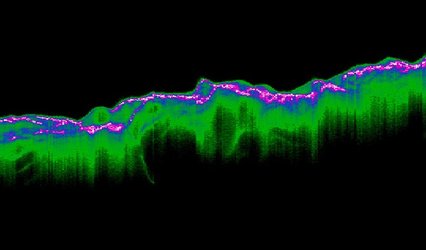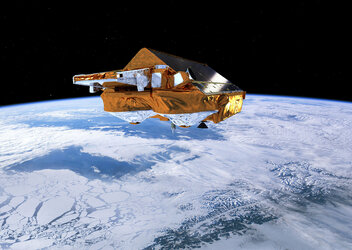ESA's ice mission
ESA’s CryoSat mission is dedicated to measuring the thickness of polar sea ice and monitoring changes in the ice sheets that blanket Greenland and Antarctica.
Diminishing ice cover is frequently cited as an early casualty of global warming. Since ice, in turn, plays an important role in regulating climate and sea level, the consequences of climate change are far reaching. It is therefore important to understand exactly how Earth’s ice fields are responding to these changes – and by how much.
CryoSat is Europe’s first mission to address this.
CryoSat was the first Earth Explorer mission to be selected in 1999, but the original satellite was lost due to a launch failure in October 2005. A new satellite – sometimes referred to as CryoSat-2 – was subsequently built with a number of improvements and was launched on 8 April 2010.

The satellite flies at an altitude of just over 700 km, reaching latitudes of 88° north and south, to maximise its coverage of the poles. Its main payload is an instrument called Synthetic Aperture Interferometric Radar Altimeter (SIRAL). Previous radar altimeters had been optimised for operations over the ocean and land, but SIRAL is the first sensor of its kind designed for ice, measuring changes at the margins of vast ice sheets and floating ice in polar oceans.
The radar altimeter is not only able to detect tiny variations in the height of the ice but it can also measure sea level with an unprecedented accuracy. Small, local phenomena in the ocean surface like eddies can be detected and analysed.
Taking CryoSat a step further, scientists have discovered that the altimetry readings have the potential to map sea level closer to the coast, and even greater capabilities to profile land surfaces and inland water targets such as small lakes, rivers and their intricate tributaries.








